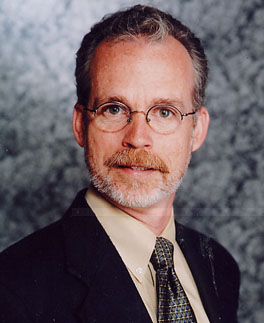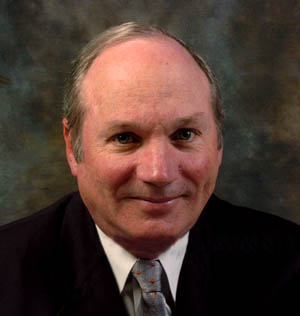Modern Physical Organic Chemistry Anslyn Pdf Free Download UPDATED
Modern Physical Organic Chemistry Anslyn Pdf Free Download
Summary
This is the first modern textbook, written in the 21st century, to make explicit the many connections between concrete organic chemistry and critical fields such as organometallic chemistry, materials chemistry, bioorganic chemical science, and biochemistry. In the latter part of the 20th century, the field of concrete organic chemistry went through dramatic changes, with an increased emphasis on noncovalent interactions and their roles in molecular recognition, supramolecular chemical science, and biology; the development of new materials with novel structural features; and the utilize of computational methods. Gimmicky chemists must be but as familiar with these newer fields as with the more established classical topics.
This completely new landmark text is intended to bridge that gap. In addition to roofing thoroughly the core areas of physical organic chemical science – construction and mechanism – the book will escort the practitioner of organic chemistry into a field that has been thoroughly updated. The foundations and applicabilities of modernistic computational methods are likewise developed.
Written by ii distinguished researchers in this field, Modernistic Physical Organic Chemistry can serve as a text for a year-long form targeted to avant-garde undergraduates or first-year graduate students, also as for a variety of shorter courses on selected aspects of the field. It volition also serve as a landmark new reference text, and every bit an introduction to many of the more advanced topics of interest to modern researchers.
Translated into Chinese
Resources
List of Adoptions
View All Frontmatter in PDF Format
Contents in Brief
Preface
A Note to the Instructor
Preview Chapter 6 on Stereochemistry in PDF Format
Resource For Adopting Professors
PDF file for pg. 515
Errata for Start Printing
Table of Contents
Chapter 1: Introduction to Structure and Models of Bonding
Intent and Purpose.
1.1 A Review of Bones Bonding Concepts.
1.2 A More Modern Theory of Organic Bonding
1.3 Orbital Mixing – Building Larger Molecules
ane.4 Bonding and Structure of Reactive Intermediates
ane.5 A Very Quick Look at Organometallic and Inorganic Bonding
Chapter two: Strain and Stability
Intent and Purpose
2.1 Thermochemistry of Stable Molecules
two.2 Thermochemistry of Reactive Intermediates
ii.three Relationships between Structure and Energetics; Basic Conformational Analysis
2.iv Electronic Effects
ii.5 Highly Strained Molecules
2.6 Molecular Mechanics
Chapter iii: Solutions and Noncovalent Bounden Forces
Intent and Purpose
3.1 Solvent and Solution Properties
3.2 Binding Forces
3.iii Computational Modeling of Solvation
Chapter iv: Molecular Recognition and Supramolecular Chemistry
Intent and Purpose
four.1 Thermodynamic Analyses of Bounden Phenomena
4.2 Molecular Recognition
4.three Supramolecular Chemistry
Chapter 5: Acrid-Base Chemistry
Intent and Purpose
5.1 Brønsted Acid and Base of operations Chemistry
5.2 Aqueous Solutions
5.3 Nonaqueous Systems
v.iv Predicting Acid Forcefulness
5.5 Acids-Bases of Bioorganic Interest
5.half-dozen Lewis Acids/Bases and Electrophiles/Nucleophiles
Chapter 6: Stereochemistry
Intent and Purpose
6.ane Stereogenicity and Stereoisomerism
six.2 Symmetry and Stereochemistry
6.3 Topicity Relationships
6.four Reaction Stereochemistry: Stereoselectivity and Stereospecificity
6.5 Symmetry and Timescale
half dozen.half-dozen Topological and Supramolecular Stereochemistry
6.seven Stereochemical Issues in Polymer Chemistry
6.8 Stereochemical Bug in Chemical Biology
Summary and Outlook
Affiliate 7: Energy Surfaces and Kinetic Analyses
Intent and Purpose:
vii.1 Energy Surfaces and Related Concepts
7.two Transition State Theory (TST), and Related Topics
vii.3 Postulates and Principles Related to Kinetic Analysis
7.4 Kinetic Experiments
seven.5 Complex Reactions – Deciphering Mechanisms
vii.6 Methods for Following Kinetics
7.7 Calculating Rate Constants
vii.eight Because Multiple Reaction Coordinates
Summary and Outlook
Chapter 8: Experiments Related to Thermodynamics and Kinetics
Intent and Purpose
8.1 Isotope Furnishings
8.2 Substituent Effects
eight.3 Hammett Plots, The Most Common LFER. A Full general Method for Examining Changes in Charges During a Reaction
eight.4 Other Linear Energy Relationships
viii.5 Acid/Base of operations Related Effects / Brønsted Relationships
8.6 Why do Linear Free Energy Relationships Work?
8.seven Summary of Linear Complimentary Energy Relationships
8.eight Miscellaneous Experiments for Studying Mechanisms
Chapter ix: Catalysis
Intent and Purpose
nine.1 General Principles of Catalysis
9.2 Forms of Catalysis
9.3 Brønsted Acid/Base Catalysis
9.4 Enzymatic Catalysis
Chapter 10: Organic Reaction Mechanisms Part 1: Reactions Involving Additions and/or Eliminations
Intent and Purpose
10.1 Predicting Organic Reactivity
10.ii Hydration of Carbonyl Structures
10.iii Electrophilic Add-on of Water to Alkenes and Alkynes: Hydration
x.4 Electrophilic Addition of Hydrogen Halides to Alkenes and Alkynes
10.5 Electrophilic Improver of Halogens to Alkenes
10.vi Hydroboration
10.7 Epoxidation
10.8 Nucleophilic Additions to Carbonyl Compounds
10.9 Nucleophilic Additions to Olefins
x.10 Radical Additions to Unsaturated Systems
ten.11 Carbene Additions and Insertions
10.12 Eliminations to Class Carbonyls or "Carbonyl-Like" Intermediates
10.xiii Emptying Reactions for Aliphatic Systems, Germination of Alkenes
10.fourteen Eliminations from Radical Intermediates
10.15 Add-on of Nitrogen Nucleophiles To Carbonyl Structures, Followed by Elimination
10.16 Addition of Carbon Nucleophiles, Followed by Elimination – The Wittig Reaction
ten.17 Acyl Transfers
10.xviii Electrophilic Aromatic Substitution
ten.19 Nucleophilic Effluvious Commutation
10.20 Reactions Involving Benzyne
x.21 The SouthRN1 Reaction on Aromatic Rings
10.22 Radical Aromatic Substitutions
Chapter 11: Organic Reaction Mechanisms Part 2: Substitutions at Aliphatic Centers and Thermal Isomerizations/Rearrangements
Intent and Purpose
eleven.i Tautomerization
eleven.2 a-Halogenation
11.three a-Alkylations
11.four The Aldol Reaction
11.v Nucleophilic Aliphatic Substitution Reactions
11.6 Substitution – Radical – Nucleophilic
11.7 Radical Aliphatic Substitutions
xi.viii Migrations to Electrophilic Carbon
11.9 Migrations to Electrophilic Heteroatoms
11.ten The Favorskii Rearrangement and Other Carbanion Rearrangements
eleven.xi Rearrangements Involving Radicals
eleven.12 Rearrangements and Isomerizations Involving Biradicals
Chapter 12: Organotransition Metal Reaction Mechanisms and Catalysis
Intent and Purpose:
12.1 The Basics of Organometallic Complexes
12.2 Common Organometallic Reactions
12.iii Combining the Individual Reactions into Overall Transformations and Cycles
Chapter 13. Organic Polymer and Materials Chemistry
Intent and Purpose
thirteen.i Structural Issues in Materials Chemistry
13.2 Mutual Polymerization Mechanisms
Chapter 14. Advanced Concepts in Electronic Construction Theory
Intent and Purpose
14.i Introductory Quantum Mechanics
xiv.ii Calculational Methods – Solving the Schrödinger Equation for Complex Systems
14.iii A Cursory Overview of the Implementation and Results of HMOT
14.4 Perturbation Theory – Orbital Mixing Rules
14.5 Some Topics in Organic Chemistry for Which Molecular Orbital Theory Lends Of import Insights
14.6 Organometallic Complexes
Chapter xv: Thermal Pericyclic Reactions
Intent and Purpose
fifteen.1 Background
fifteen.2 A Detailed Analysis of Ii Simple Cycloadditions
xv.3. Cycloadditions
xv.4 Electrocyclic Reactions
15.5 Sigmatropic Rearrangements
xv.6 Chelotropic Reactions
xv.7 In Summary, Applying the Rules
Summary and Outlook
Affiliate xvi: Photochemistry
Intent and Purpose
xvi.one Photophysical Processes – the Jablonski Diagram
16.ii Bimolecular Photophysical Processes
16.3 Photochemical Reactions
16.iv Chemiluminescence
16.5 Singlet Oxygen
Chapter 17: Electronic Organic Materials
Intent and Purpose
17.1 Theory
17.ii Conducting Polymers
17.3 Organic Magnetic Materials
17.4 Superconductivity
17.5 Nonlinear Eyes (NLO)
17.six Photoresists
17.7 Summary
Reviews
"Students and others are emphatically recommended to read this excellent volume. "Anslyn & Dougherty" should be in every chemical library. Information technology will be a valuable aid to every student, but it can also be strongly recommended for all research chemists as a reference source on concrete-organic chemistry. The book is a worthwhile investment."
-Angewandte Chemie, 2006, 45, 1019-1020
"MPOC is the virtually well rounded textbook on physical organic chemistry that I have seen. The authors are to be commended for their vi year "labor of love."
-J. Chem. Ed, 2006, March, Vol. 83, No. 3, pg. 387
"Modern Concrete Organic Chemistry is a virtually impressive resource for researchers and teachers, and all the same it too offers an accessible entree into the topics for avant-garde undergraduates and postgraduates. Each affiliate ends with a "Summary and Outlook", an excellent assortment of problems and exercises and a comprehensive bibliography that often refers to the review literature. This type of text is frequently not easily accessible to the undergraduate reader, but I found this one to be well structured and very pleasant to read. Mod Physical Organic Chemistry is a book I am very happy to have on my shelf."
-The Times Higher, 2006
"Spectacular! Congratulations! I program to recommend it to all of my inquiry group members and to those students in my form who are getting hooked on organic chemical science. This is going to be a winner."
-Peter Vollhardt, University of California at Berkeley
"Anslyn and Dougherty have done an beauteous and scholarly chore to put the essence of this important subject betwixt the covers of a single text. I can enthusiastically recommend the text for anyone who is teaching a course dealing with the essentials of concrete organic chemistry and more."
-Nicholas J. Turro, Columbia University
"The text will certainly inspire those coming to physical organic chemical science as a showtime honey, every bit well as those coming from a bordering discipline who wish to acquire the insight that physical organic chemistry can provide."
-Barry Carpenter, Cornell University
"This much needed text places physical organic chemical science in its well-nigh modern context as the foundation of not merely organic chemical science, but equally the footing for understanding the most current inquiry in supramolecular chemistry, organic materials science, catalysis, and organometallics. This volume is the new authoritative physical organic resource that will benefit researchers, students, and teachers alike."
-Timothy M. Swager, Massachusetts Institute of Technology
"By building the text from the ground up, the authors have managed to incorporate modernistic applications of the theories of physical organic chemistry throughout, in a mode that no revision of an existing text can promise to reach."
-Thomas Poon, Claremont Colleges
"This is a loftier quality book that fills a real need in our field, and that makes every other book in this area immediately obsolete. Congratulations to the authors on a remarkable achievement!"
-David I. Schuster, New York University
DOWNLOAD HERE
Posted by: ortizdreasockinly.blogspot.com


